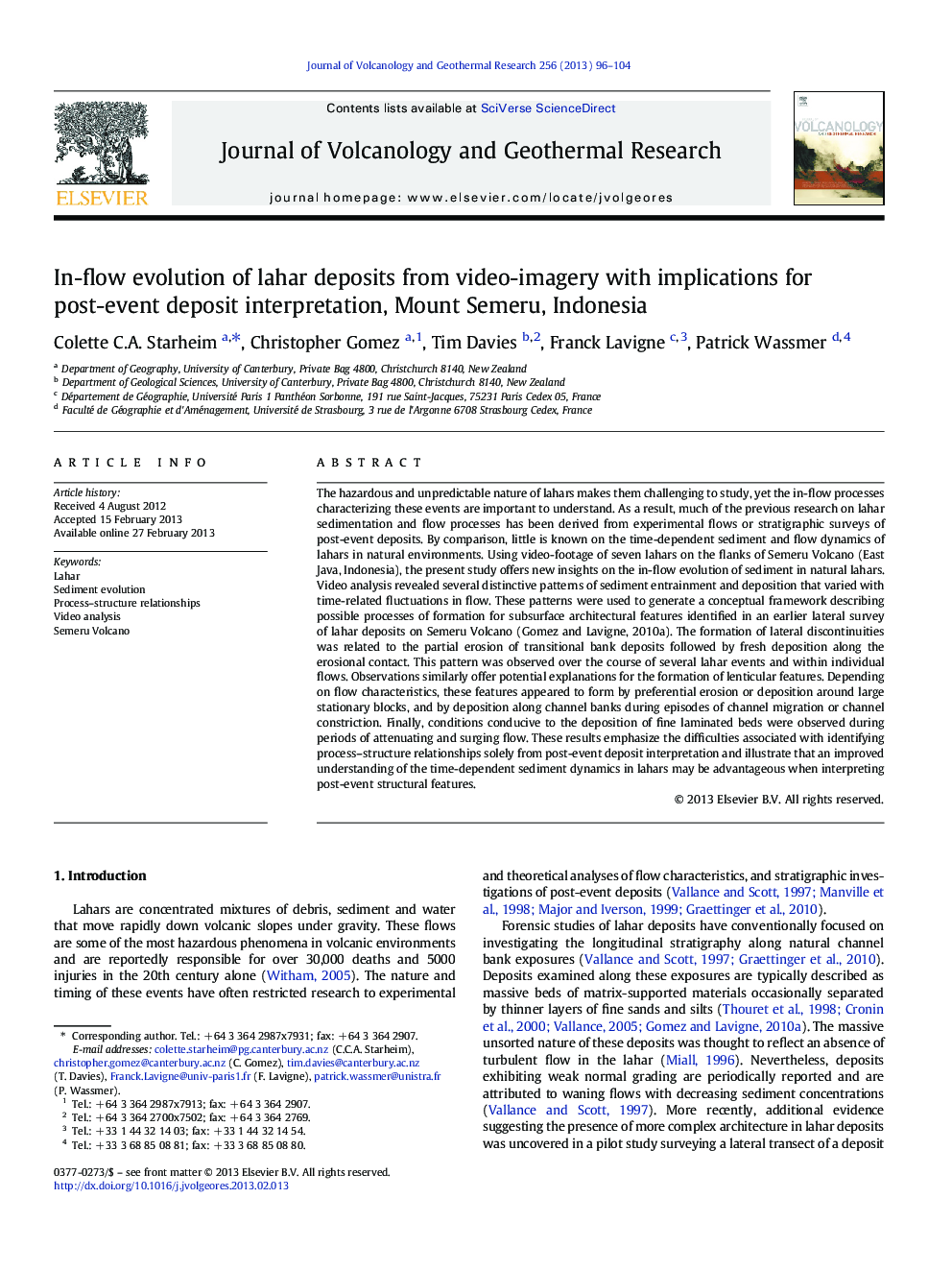| Article ID | Journal | Published Year | Pages | File Type |
|---|---|---|---|---|
| 4713393 | Journal of Volcanology and Geothermal Research | 2013 | 9 Pages |
The hazardous and unpredictable nature of lahars makes them challenging to study, yet the in-flow processes characterizing these events are important to understand. As a result, much of the previous research on lahar sedimentation and flow processes has been derived from experimental flows or stratigraphic surveys of post-event deposits. By comparison, little is known on the time-dependent sediment and flow dynamics of lahars in natural environments. Using video-footage of seven lahars on the flanks of Semeru Volcano (East Java, Indonesia), the present study offers new insights on the in-flow evolution of sediment in natural lahars. Video analysis revealed several distinctive patterns of sediment entrainment and deposition that varied with time-related fluctuations in flow. These patterns were used to generate a conceptual framework describing possible processes of formation for subsurface architectural features identified in an earlier lateral survey of lahar deposits on Semeru Volcano (Gomez and Lavigne, 2010a). The formation of lateral discontinuities was related to the partial erosion of transitional bank deposits followed by fresh deposition along the erosional contact. This pattern was observed over the course of several lahar events and within individual flows. Observations similarly offer potential explanations for the formation of lenticular features. Depending on flow characteristics, these features appeared to form by preferential erosion or deposition around large stationary blocks, and by deposition along channel banks during episodes of channel migration or channel constriction. Finally, conditions conducive to the deposition of fine laminated beds were observed during periods of attenuating and surging flow. These results emphasize the difficulties associated with identifying process–structure relationships solely from post-event deposit interpretation and illustrate that an improved understanding of the time-dependent sediment dynamics in lahars may be advantageous when interpreting post-event structural features.
► We investigated the in-flow deposit evolution for lahars using video-imagery. ► We related previously reported deposit structures to in-flow sediment dynamics. ► We present evidence for deposition of fine laminar beds during surging lahar flow. ► Process–structure relationships postulated for lens-like features and discontinuities ► Results demonstrate the necessity to improve understanding of lahars during flow.
